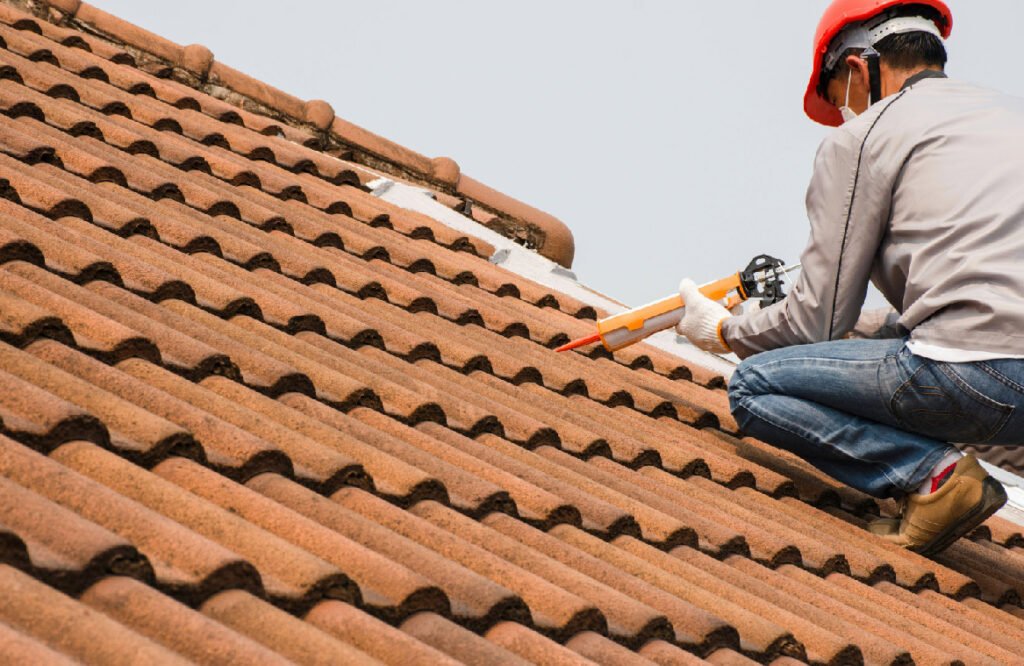Spot the Signs Before It’s Too Late!
It starts with something small—a ceiling stain, a water drip, or a musty smell in the attic. Maybe you brush it off, thinking it’s just condensation or an old mark. But then, the next rainstorm comes. Water stains grow, damaged ceilings appear, and you start noticing other warning signs. That’s when reality sets in: You have a roof leak. Catching a leaking roof early can save you thousands in roof repair costs. The key is recognizing the telltale signs before further damage occurs.
1. Water Stains and Interior Damage
One of the most common signs of a roof leak is a ceiling stain. These can be fairly small at first, but they indicate that moisture buildup is happening above.
“I noticed a faint brown mark on my ceiling,” says Brian, a homeowner from Connecticut. “By the time I checked my attic, the wet insulation had started growing mold.”
Where to Check for Water Stains:
- Ceilings near light fixtures
- Upper interior walls
- Areas around roof vents and roof valleys
- Along the roof’s framing
Act quickly if you see dark spots, wet surfaces, or water dripping from your ceiling. These are obvious signs of a leak that needs immediate attention.
2. Missing or Damaged Shingles
A roof leak often starts outside. If you have missing shingles or damaged shingles, your roof is exposed to the elements. The roofing industry warns that just a few missing or damaged shingles can lead to severe roof damage over time.
“I found a couple of shingles in my yard after a storm,” says Tom from Massachusetts. “I didn’t think much of it—until I noticed a leak inside my attic.”
Other Signs of Roof Problems:
- Rusty spots on metal roofing
- Rotted framing near roof edges
- Small holes in the roof decking
If your roof has damaged flashing, a gutter apron issue, or rusted gutters, water can seep in through vulnerable areas, causing roof problems.
3. Wet Insulation and Mold Growth in the Attic
Your attic is one of the first places to check for a roof leak. If water is getting in, you might find wet insulation, mold growth, or moist air trapped in the space.
“I kept noticing a damp smell every time I used my attic access,” says Sarah from New Haven. “Turns out, warm attic air was allowing moisture to build up, causing mold.”
Did you know? Mold can start growing within 24-48 hours if moisture buildup isn’t addressed.
How to Prevent Attic Moisture Issues:
- Install an air chute to improve airflow
- Ensure roof vents move warm attic air out efficiently
- Repair any missing flashing or damaged flashing
4. Leaky Roof? Check Your Roof Valleys and Flashing
Some of the most common signs of a leaking roof start around roof valleys, chimneys, and skylights. These areas require flashing to keep water out, but damaged flashing or missing flashing allows leaks to form.
“We noticed a small drip in our living room,” says Kevin from Connecticut. “Our roofer found that water flows down our roof valleys and seeped through a tiny gap in the flashing.”
Check These Areas for Leaks:
- Around chimneys and roof vents
- Where two slopes meet (roof valleys)
- The roof edge, where gutter apron issues can occur
If flashing is damaged, water flows into the attic, soaking the attic floor, wet insulation, and other materials.
5. Roof Edge and Gutter Problems
Your roof edge is a vulnerable area when it comes to roof leaks. If your rusted gutters or damaged flashing let water pool at the edges, it can seep underneath your roof decking.
“I never thought my gutters could cause a leaking roof,” says Tom. “But after a heavy rain, I had water damage near the exterior wall because of a clog.”
Prevent Gutter-Related Leaks:
- Keep gutters clear to prevent moisture buildup
- Check for rusty spots or damaged flashing
- Ensure a gutter apron is properly installed
Ignoring roof problems caused by gutters can lead to a rotted framing, damaged ceilings, and costly repairs.
6. Light Coming Through the Attic Access
If you go into your attic during a cold night and see light coming through your roof decking, that means you have tiny holes—a sure sign of trouble.
“I saw a few tiny holes near the eaves,” says Michelle from New Jersey. “A roofing contractor told me that meant my shingles were starting to fail.”
- Fixing Small Roof Holes Before They Get Worse
- Seal small leaks before they expand
- Have a roofing contractor inspect for other signs of damage
- Consider a new roof if there’s widespread deterioration
7. When to Call a Professional Roofer
Not all roof repairs require a new roof, but delaying action can lead to further damage.
If you notice water damage, damaged ceilings, or common signs of a leak, it’s best to call roofing professionals.
“I waited too long to fix my roof,” admits Eric from Massachusetts. “What started as a small leak turned into major interior damage—and I had to replace my entire roof.”
How Much Does Roof Leak Repair Cost?
- Small leak repair: $300 – $1,000
- Moderate roof repair: $1,500 – $3,500
- Major roof damage: $5,000+
Catching a leak early can prevent moisture buildup, saving you thousands.
Protect Your Home—Act Quickly
If you suspect a leaking roof, don’t wait. A small leak today can become a major repair tomorrow.
Think you have a roof leak? Contact Ever Gold Roofing Group for a professional inspection. We’ll help you identify roof damage, repair missing shingles, and protect your home from further damage.

